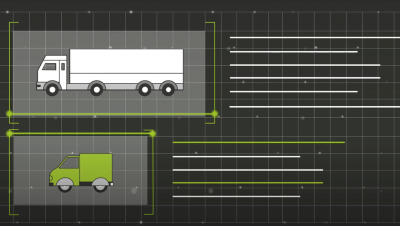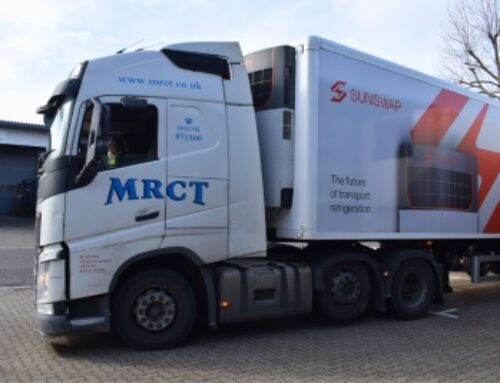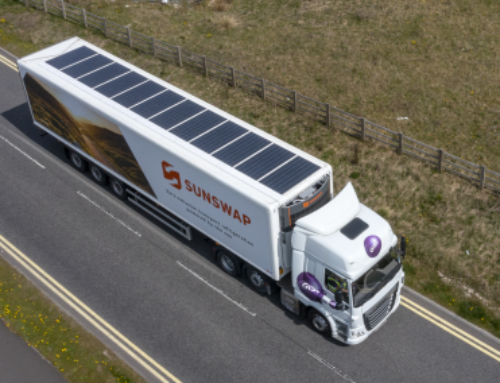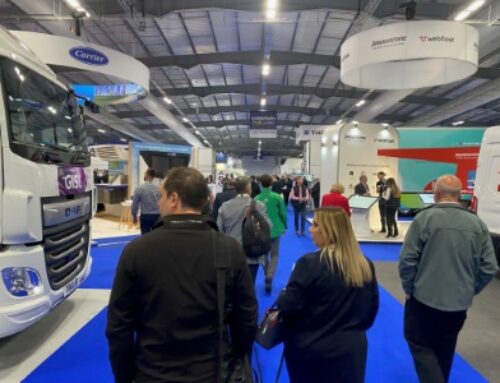Smart data and the road to EV adoption
 The future of electric fleet conversion relies on intelligent, data-led insights, says Barney Goffer, UK product manager at telematics provider Teletrac Navman
The future of electric fleet conversion relies on intelligent, data-led insights, says Barney Goffer, UK product manager at telematics provider Teletrac Navman
From internal challenges like rising fuel costs, to government deadlines to switch to green alternatives, to changing emissions standards, and end-customers expecting suppliers to be making steps towards a more sustainable future, there is a clear need for commercial fleets to begin considering the conversion over to electric.
Fuel costs are proving to be the biggest challenge facing fleet operators in 2023, according to recent research by Teletrac Navman – and this is likely going to remain an issue as prices continue to remain elevated.
No matter the size of the fleet, higher rates for traditional fuels continue to have a huge impact on operations and are just one of the reasons fleet managers should start to consider what’s entailed in a switch to an electric fleet – particularly given they represent 48 per cent of all new vehicles sold globally in 2030, according to the ‘Electric Vehicle Outlook: 2021 and Beyond’ report.
While EVs are growing in popularity, the transport and logistics sector still has a way to go, and we need to be realistic about what’s achievable, regardless of government mandates on vehicle production.
This is very much going to be a mixed-fleet future for many years to come, where fleet operators utilise both ICE and EV vehicles, which is a realistic solution given how the market is progressing with vehicle availability, range, and accessible price points.
With the government bringing the ban on selling new petrol and diesel vehicles forward to 2030 and most major UK cities booming with clean air zones or about to launch one, operators need to have a clear understanding on where their fleet stands, and what exactly can be done.
From talking to our customer base, we can see a few fleets have ambitious plans to switch everything to electric, while others are waiting and focusing on immediate issues such as supply chain challenges and difficulties brought on by the pandemic still.
However, making greener choices doesn’t need to be this huge overnight change as that can be unrealistic for many fleets. This is more about being empowered with the right data to make the most informed decision for your fleet and your business. After all, you don’t know what you don’t know.
While some companies are escalating the rollout of electric across their fleets, there are many businesses not as confident to make the move due to lack of data they have available, as well as a lack of guidance on how to do it properly or when the best time for their fleet might be.
What makes it even trickier is that it’s not a one-size-fits-all solution, as different fleets will have different considerations – available capex and any current grants that can be utilised against the size of business; the consistency of trips for range consideration; and the required charging infrastructure etc. However, it could be argued that those making the leap now will benefit in the long-run as the costs can be absorbed gradually.
From what we’re seeing, the transition from ICE to EV fleets is most often implemented in stages – replacing vehicles as and when appropriate – but understanding how to do this in the most effective way for the business is challenging.
Supply chain pressures, combined with the war in Ukraine and uncertainty caused by the pandemic still around, are making it very difficult for fleet operators to plan effectively, or want to make too many major and costly decisions. Fleet operators need to be able to make the switch in the most informed and sustainable way, and that’s where smart data has a major role to play – by increasing visibility, conducting real-time analysis, and presenting scientific data to make informed decisions from.
 Without smart data it’s a case of ‘what does your gut tell you’ and that’s not a great place to be in with business decisions as big as this to make.
Without smart data it’s a case of ‘what does your gut tell you’ and that’s not a great place to be in with business decisions as big as this to make.
There’s now software that gives fleet operators all the information they need to be able to look at the full picture and make an informed choice – to begin transitioning now, or to plan for it in the future.
By using smart algorithms to assess trip data, these tools provide fleet operators with insight into the feasibility of switching to EV by presenting a multitude of elements including suitable vehicles in-market, total cost of ownership, fuel savings and environmental impact.
It examines whether a fleet or vehicle is viable for switching and rather than providing a blanket yes or no, the customisable platform can offer a forensic analysis of vehicle use-data to provide a viewpoint on a phased approach to transitioning to an EV fleet. As well as having a huge positive impact on emissions and a company’s eco commitments, switching to EV can also save companies time and money if done correctly.
What’s more, operators who aren’t quite ready to make a move can still make a change by using telematics data to navigate around issues like charge zones and congestion, idling, speeding, harsh braking or acceleration, all of which can contribute to increased pollution levels.
So, whether you choose to move now, or in the future, or prefer to better use existing telematics data to be sustainable in your operation, you’re more informed and empowered than you were before, thanks to smart data – it really is the key to unlocking the future of the sector.
Teletrac Navman has published a blog on its website, going into detail on the various considerations fleet operators need to make when preparing to switch.










